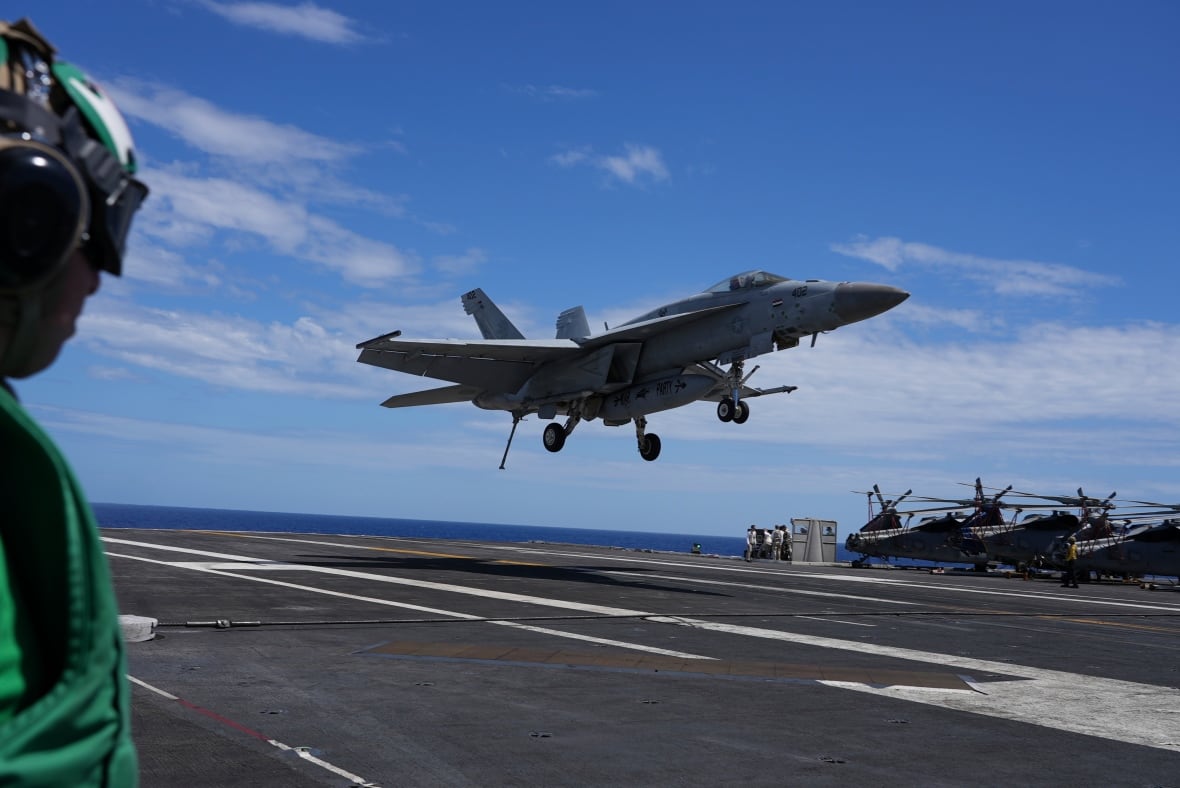NATO's rearmament reignites age-old defence debate of quantity vs. quality
As NATO nations, including Canada, ramp up rearmament, they are increasingly confronted with various ghosts of the Cold War, notably the resilience of Russian industry and its capacity to be able to deliver weapons — that while often technologically inferior to the West — are "good enough" to wage war.
Moscow's ability to produce en masse drones, missiles, aircraft and other weapons of war has been hampered by sanctions and a long-term erosion of quality is taking place.
"Russia is currently struggling to build genuinely new and technologically advanced systems," said the report by Mathieu Boulègue, published last month by the U.K.-based Chatham House think-tank.
"Instead, it is relying on Soviet-era legacy systems and research. It is also heavily dependent on third-party suppliers to replace essential Western-made components — with import substitutions and domestic production failing to meet requirements."
The report, in part, exposes one of the biggest debates going on in the Western defence community right now. The 32 members of the NATO military alliance have agreed to drastically expand military spending, aiming to deliver five per cent of their gross domestic product for defence spending by 2035. The emphasis, especially for Canada, is in high-tech innovation.

But, experts ask, should NATO nations be investing billions of dollars in expensive, high-tech weapons systems, such as the F-35 stealth jet and the highly sophisticated, recently ordered River Class destroyers? Or, should there be more emphasis on cheaper, disposable technology?
While acknowledging the debate is not mutually exclusive, critics of high-spending, high-tech plans point at how multimillion-dollar Russian tanks are being disabled and destroyed by small, inexpensive — in some cases garage-built — drones.
The emphasis on quantity over quality is something NATO should be paying closer attention to as it builds out its rearmament plans, said a Canadian arms control expert.
"This is a long, long running debate," said Andrew Rasiulis, who once ran the Directorate of Nuclear and Arms Control Policy at the Department of National Defence.
"Quantity has a quality of its own, and the Russians have quantity."
He said too much should not be made of the fact that Moscow's munitions and equipment are less sophisticated and NATO nations, such as Canada, need to look at their investments not through the lens of spending a certain amount of money, but what makes sense militarily.
"What's important is the ability of one side to deter and defend, if necessary, against the other side," Rasiulis said.
In many respects, NATO has been here before.
When the Cold War reached new heights in the 1980s, the Soviet Union maintained an enormous military presence in Warsaw Pact nations with a ratio of five divisions for every U.S.-led division. NATO made up for that with better technology and nuclear deterrence.
Russia was largely equipped with less sophisticated Soviet-designed weapons that benefited from common parts and ammunition, which meant simplified logistics and training.

The Chatham House report said despite the Kremlin's record levels of military spending, the current state of its military industry is one of regression — contrary to what the Kremlin would have the world believe.
"Production will likely have to be simplified and slowed over the coming years, while Russia will be forced to accept reduced quality of outputs and will suffer from 'innovation stagnation' in its technological research and development," said the report.
"These problems are not insurmountable. Russia will continue to muddle through and keep producing systems that are 'good enough' to pose a sustained threat to Ukraine. But being 'good enough' to prolong a war against Ukraine is not the same as being able to keep up with Western (and Chinese) advances in military technology over the longer term."
Russian know-how being shared with North KoreaIt seems, however, the quantity versus quality debate is not only going to be NATO's problem.
Defence Intelligence of Ukraine head Kyrylo Budanov said in early June that Russia's proven, basic technological know-how is being shared with North Korea.
On July 1, he said Moscow had transferred the first batch of its Pantsir-S1 surface-to-air missile systems to the regime of Kim Jong-un and had provided technology for mass-producing Iran-designed Shahed-type attack drones.
"It will for sure bring changes in the military balance in the region between North Korea and South Korea," Budanov was quoted as saying by Ukrainian media.
Recent information, he said, indicates that North Korean workers are being trained at Russian plants, including facilities in the Alabuga Special Economic Zone, in Tatarstan, where modified Shahed drones are assembled.
cbc.ca





